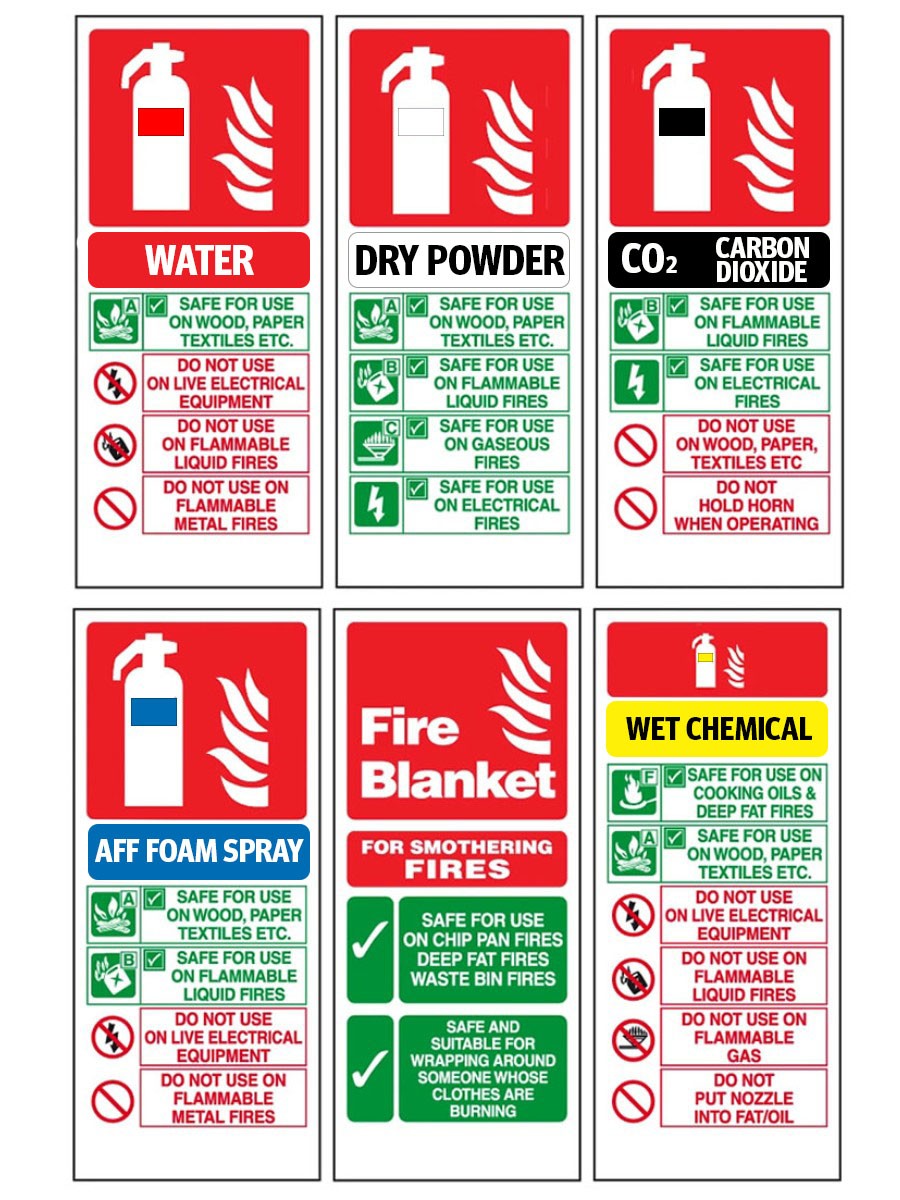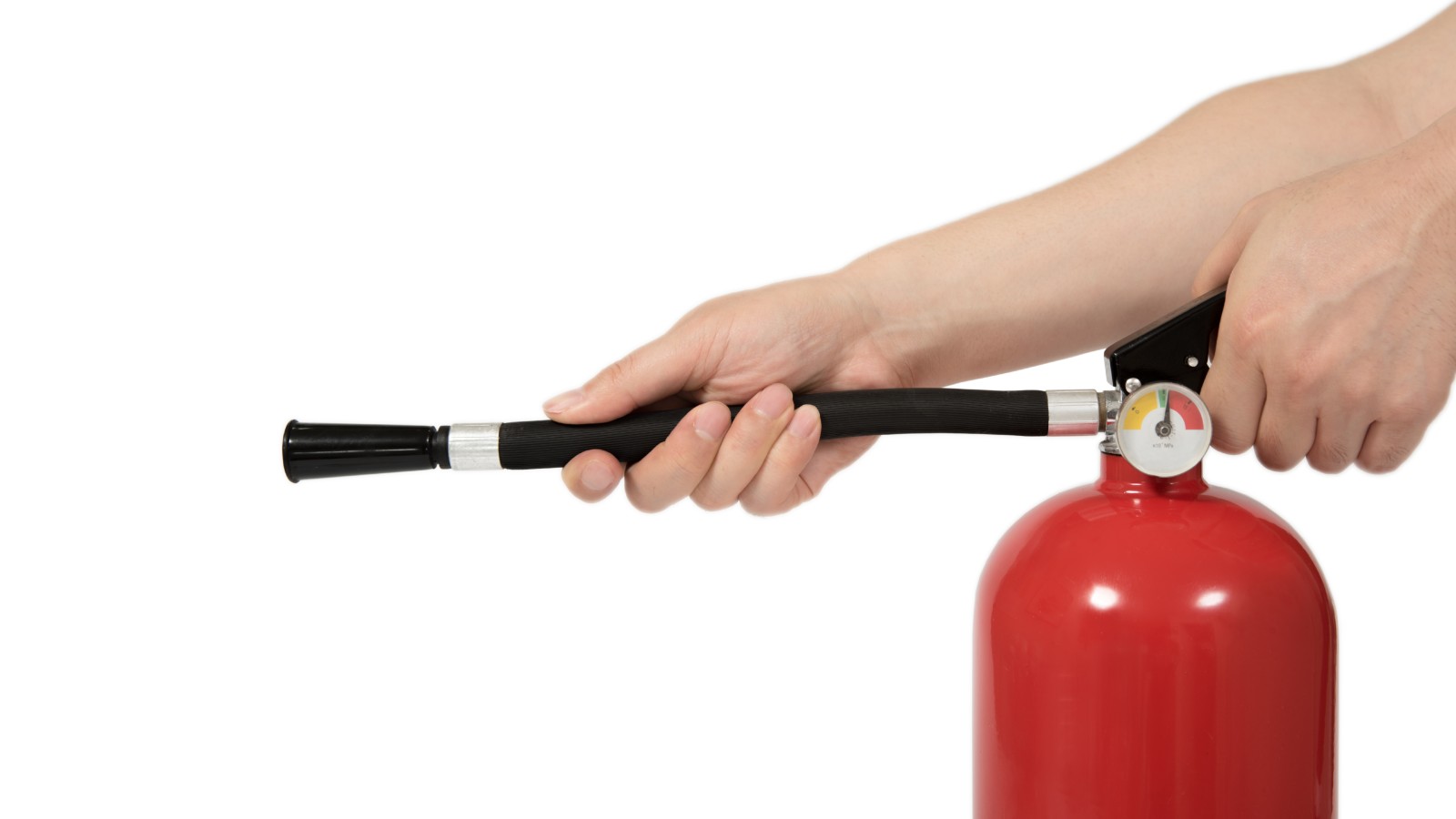Emergency situations require prompt action, however it is important that people remain as calm as possible and follow instructions. Different types of emergencies require different reactions, for example, a fire or bomb threat will probably require an evacuation of the premises however a medical emergency may require urgent first aid treatment to be administered. Ensure you are familiar with your workplace's emergency procedures and act accordingly.
There are a number of possible causes of fire in the workplace, listed below are the most common:
-
Unsafe actions by people, such as smoking in areas where flammable materials are present.
-
Unsafe conditions, such as overloading electrical circuits, unsafe wiring, incorrect fuse sizes.
-
Electrical malfunctions.
-
Unsuitable storage of combustible materials.
-
Friction, such as conveyor belts.
-
Chemical and liquids with low flash points (which evaporate at room temperature to create an explosive air/vapour mixture), flammable gases and vapours, cleaning solvents.
Not all fires are the same. Depending on what is actually burning they are classified differently:
-
CLASS A (Water, Dry Powder, AFF Foam Spray & Wet Chemical) - Combustible material: wood, paper, fabric.
-
CLASS B (Dry Powder & CO2) - Flammable liquid: petrol, kerosene, alcohol.
-
CLASS C (Dry Powder) - Flammable gas: LPG, butane.
-
CLASS D (Dry Powder) - Combustible metals: potassium, sodium, aluminium.
-
CLASS E (Dry Powder & CO2) - Electrical hazards.
-
CLASS F (Wet Chemical)- Cooking fats and oils.
It is important to know the location of the fire extinguishers in your building and which extinguishers should be used for certain fire classifications. The most common types of fire extinguishers are:

-
Identification - Solid red coloured canister.
-
Used for - Class A: wood, paper and cloth.
-
Warnings - NEVER use a water fire extinguisher on flammable liquid or an electrical fire. Water will only spread flammable liquid, which will most likely spread the fire, and in the case of an electrical fire, water may conduct the electrical current, which can electrocute you.
-
Identification - Red canister with a white band.
-
Used for - Class A: wood, paper and cloth, Class B: flammable liquid and Class C: flammable gas, Class D: combustible metals, Class E: electrical fires.
-
Identification - Red canister with a black band and a large shield nozzle.
-
Used for - Class B: flammable gas and Class E: electrical fires.
-
Warnings - DO NOT USE on Class A fires: wood, paper, textiles.
-
Identification - Red canister with a blue band.
-
Used for - Class A: wood, paper and cloth and Class B: flammable liquid fires.
-
Warnings - DO NOT USE on electrical fires or on flammable metal fires.
-
Identification - Red pouch with the words 'FIRE BLANKET' printed on the label.
-
Used for - Smothering all types of fires but especially good for kitchen fires, small bin fires and for wrapping around a person whose clothes are burning.
-
Identification - Red canister with a yellow band.
-
Used for - Class A: wood, paper and cloth and Class F: cooking oils and deep fat fires.
-
Warnings - DO NOT USE on electrical, flammable liquid or flammable gas fires.
If there is a fire or other type of emergency that requires an emergency evacuation the following six steps should be observed:
-
Remain calm - Do not panic, this doesn't achieve anything and can scare others.
-
Alert others - Verbally advise others and/or set off the fire alarm.
-
Call 000 - Advise them of the type of emergency. The fire brigade will probably be the main responder, they deal with fire, bomb threats and also toxic spills / hazardous waste. However, the police or an ambulance may also be required.
-
Safely contain or control the situation (if possible) - If the situation is a fire then close doors or use fire extinguishers, only if it is safe to do so.
-
Evacuate calmly - If there is smoke in the vicinity stay low, cover nose and mouth. Inform others of the need to evacuate. If your workplace has one, follow the directions of the Fire Warden / Marshall. These people are specially trained in emergency evacuations and have the responsibility to ensure everyone in the building gets out safely and is accounted for.
-
Assemble at a designated area - Wait for the emergency services, they will advise when it is safe to re-enter the building.
If the fire is the same size or smaller than a paper bin, not spreading quickly, and you know the main fuel involved you may attempt to fight the fire using the correct fire extinguisher. However, if attempting to fight the fire puts yourself or others in further danger, the extinguisher is not having a positive effect on the fire or it's not extinguished in 30 seconds, you must cease fighting the fire and commence evacuation procedures.
Consider if there are people with hearing impairment, vision impairment, are in wheelchairs or have intellectual disabilities, make them aware of the emergency and the need to evacuate in a timely manner, provide assistance as required.
If you receive a bomb threat via the telephone, follow these guidelines:
-
Keep the caller talking (do not hang up) as this may assist in tracing the call.
-
Remain calm and do not say or do anything that may encourage irrational behaviour.
-
Notify a colleague or your supervisor as soon as possible and have them call 000.
-
Take notes of exact words or phrases that the caller uses. The time of the call. Any information that they provide such as when the detonation is supposed to happen. Identifying features of the caller (gender, approximate age, accent, background noises etc...)
-
Switch off mobile phones and ensure others in the workplace do the same, they can be used as remote detonators.
-
Check the immediate work area and public areas for any suspicious packages or bags.
-
Do not evacuate unless the police/fire personnel advise you to do so.
Armed hold-ups are a very real concern for the business community. Employers and employees can follow precautions (such as those listed below) to prevent an armed hold-up, or at the very least, be able to assist police with a detailed description of the offender.
-
Cash register areas should be designed to deter thieves by ensuring members of the public cannot access the terminal, CCTV should be clearly positioned over the cash register area.
-
Ensure that members of the public cannot gain access to restricted staff areas (stock rooms, behind the counter, staff rooms).
-
Be wary of early and late customers and people behaving suspiciously or loitering near the premises. If your premises offers 24 hour access then provide security tags so clients can gain entry after hours and instruct them on safe use (ie. don't allow others to enter at the same time).
-
Utilise signage such as "Please remove helmets before entering the building".
-
Practice taking mental descriptions of people and vehicles eg, clothing, height, weight, tattoos, jewellery, property carried, car make, model, colour, year of manufacture etc.
-
If the premises has an alarm or duress button installed, ensure that all staff have training in how to use it.
-
Have emergency numbers handy, and if the telephone system has speed dial, use it to program emergency numbers.
-
Keep doors locked until all money is secured in the cash register (opening) and lock them before reconciling and depositing takings in the safe (closing).
-
Have a height chart on the exit door.
In the event of a hold-up
-
Do what you are told, no more, no less.
-
Try to memorise the details of the offender, including their vehicle. Write these details down as soon as you get the opportunity.
-
If the workplace has a duress alarm activate it as soon as it is safe to do so.
-
As soon as the offender leaves, lock the doors and cease trading, ask any customers / clients that were present at the time of the hold up to remain behind as witnesses.
-
Ring 000 and ask for the police.
-
Do not touch anything, isolate the areas the offender has been and do not contaminate the crime scene.
Damage to the premises and personal property can be caused by extreme weather events. The safety of personnel and clients may also be put at risk.
Examples of weather emergencies include:
-
Thunderstorms.
-
Floods.
-
Bushfires.
State Governments and Local Councils will often have an alert system in place that you can register for. This provides text message warnings if a weather-related event is expected for your immediate area. It is worth researching if such as service exists in your state/territory or city/town and registering for the alerts.
These types of emergencies can cause loss of power or clean water supply, structural collapse/damage, and interior flooding. Having a workplace policy for dealing with weather-related emergencies is advisable, especially if your place of employment is in an area highly prone to these types of events, for example, North Queensland is susceptible to cyclones and thus structural damage, floods, power and clean water loss.
If your workplace does not currently have a weather emergency policy in place then suggest it to your supervisor. Things to consider when formulating this type of policy:
-
Back-up power sources - For example, generator or battery.
-
Insurance - Hopefully this is already in place, however, the policy could refer to the applicable insurance policy and indicate the location of the policy documents so they can be accessed easily.
-
Duties for specific employees - Is someone going to be responsible for first aid? Is another person responsible for organising repairs?
-
Contact numbers for assistance personnel - 000 should be used for immediate emergencies, however, there may also be a State Emergency Service (SES) number you can call as well as veterinarian contact details.
-
Transport limitations - It is advisable to not drive during severe weather events, roads can be closed or obstructed. Have a back-up plan in place if employees are unable to travel to a particular location or make it into work. The policy should caution staff about the dangers of driving through floodwater and advise them to always pay attention to signs, barricades and emergency personnel.

